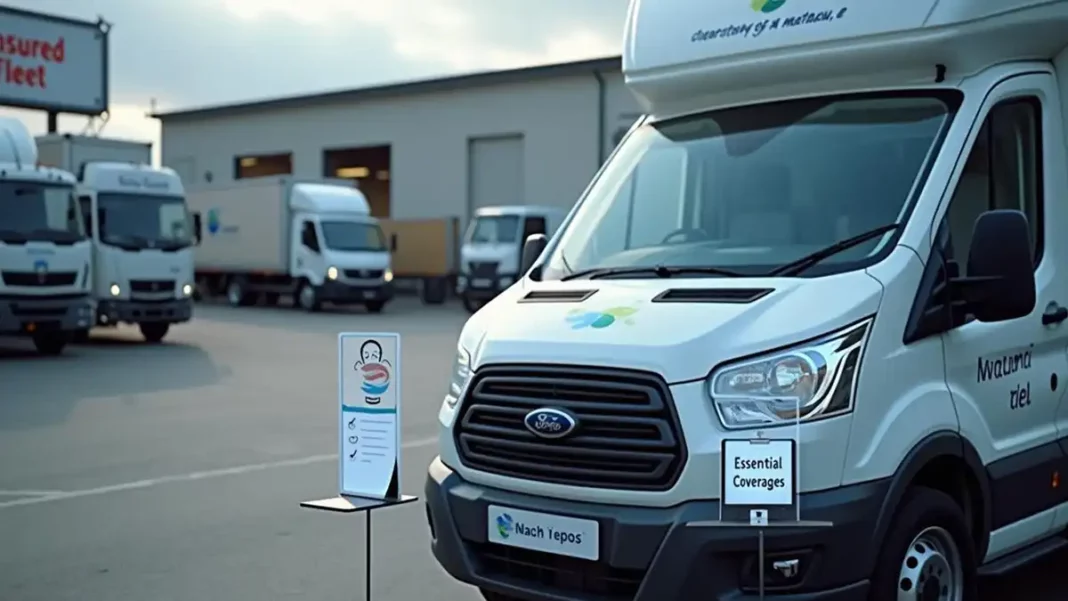Understanding the risks that come with commercial vehicles is vital for any business owner. From delivery vans to heavy-duty trucks, these vehicles carry goods, passengers, or equipment and face daily hazards. An accident can halt operations, damage reputation, and lead to high bills. Insurance protects against these threats. Yet many businesses skip essential coverages, leaving gaps that can cost dearly. This guide explains three core types of insurance every operator should know. Each section digs into one coverage area. The goal is simple: help business owners choose the right protection without confusion.
1. Liability Coverage Basics
Liability coverage is the cornerstone of any commercial vehicle policy. It pays for damage or injury that drivers cause to others. When a truck hits a car or a delivery van backs into a storefront, liability steps in. Medical bills, repair costs, and legal fees all get covered under both bodily injury and property damage components. Limits must meet or exceed state minimums, but going higher can protect against large claims. Policies often come in split limits—separate amounts for each injured person and one total. Choosing the right split means balancing premium costs with risk exposure. Exclusions vary, so reading the fine print is crucial. Some plans exclude certain cargo or driver categories, such as new hires. Regular audits of driver records and clear company policies on safe driving help keep liability rates down. Training programs and written safety rules show insurers that the business takes risk seriously. That can translate into better rates at renewal time. Liability coverage doesn’t stop at the vehicle. It can extend to pollution events, towing accidents, and even loading or unloading mishaps. Understanding each facet of liability protection is key to ensuring that one mistake doesn’t become a financial disaster for the entire company.
2. Physical Damage Protection
Physical damage coverage handles costs when vehicles themselves are harmed. There are two main parts: collision and comprehensive. Collision pays to repair or replace vehicles after crashes. Comprehensive coverage covers non-collision events—things like fire, theft, vandalism, or falling objects. This ensures that a cracked windshield from a rock or hail damage doesn’t come out of pocket. Deductibles let businesses choose how much risk they carry; higher deductibles mean lower premiums but bigger out-of-pocket expenses per claim. It’s important to set the deductible at a level the company can absorb without straining its cash flow. This coverage applies to owned and leased vehicles alike. For fleets with mixed ownership models, policies must match each vehicle’s status and value. Vehicles parked overnight in high-theft areas may need added endorsements to guard against cargo loss or break-ins. Accurate vehicle valuations keep claims fair. Under-insuring can leave gaps that reduce payout, while over-insuring wastes premium dollars. Transparency with insurers—about mileage, garaging locations, and use patterns—ensures that coverage reflects reality. Some companies bundle physical damage with commercial auto insurance to streamline billing and claim handling. Taking time to compare endorsement options and adjust values annually helps maintain both protection and budget balance.
3. Medical Payments and Personal Injury Protection
When accidents happen, medical expenses for drivers and passengers can climb quickly. Medical payment coverage, or MedPay, steps in to cover initial treatment costs, regardless of fault. It pays for ambulance fees, emergency rooms, and even follow-up care up to policy limits. This coverage also often applies to pedestrians or third parties injured by the insured vehicle. Personal Injury Protection (PIP) goes further in no-fault states. It covers lost wages, essential services like childcare, and rehabilitation costs. PIP ensures that drivers aren’t left without income while recovering. Both MedPay and PIP can speed up medical claims, keeping injury victims focused on healing rather than paperwork. Policies vary by state on whether they’re optional or mandatory. Deductibles and limits must be chosen wisely: too low, and the coverage may be insufficient; too high, and the premium could outweigh the benefit. Coordinating medical payment coverage with health insurance policies avoids duplication and maximizes efficiency. Clear claims processes and prompt reporting ensure that injured parties get fast care and that the business avoids potential lawsuits over denied or delayed medical bills.
Conclusion
Commercial vehicle operations present unique challenges and exposures. From liability and physical damage to medical payments and cargo protection, each coverage area plays a vital role. Uninsured motorist safeguards guard against irresponsible drivers, while regulatory endorsements ensure compliance with local and federal rules. By combining these three essential coverages, businesses create a comprehensive shield against the unexpected. Regular policy reviews, accurate reporting, and clear communication with insurers keep protection strong and premiums competitive. Understanding each insurance component empowers business owners to make informed choices.
Josie Patra is a veteran writer with 21 years of experience. She comes with multiple degrees in literature, computer applications, multimedia design, and management. She delves into a plethora of niches and offers expert guidance on finances, stock market, budgeting, marketing strategies, and such other domains. Josie has also authored books on management, productivity, and digital marketing strategies.


